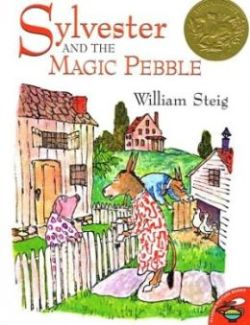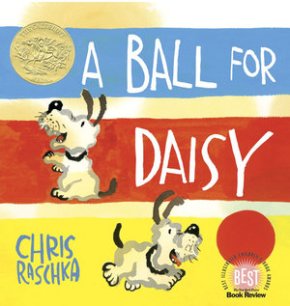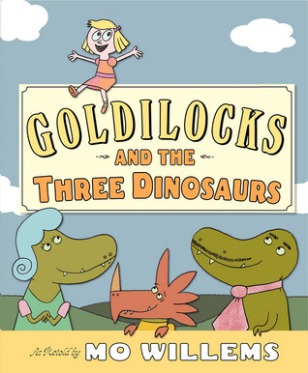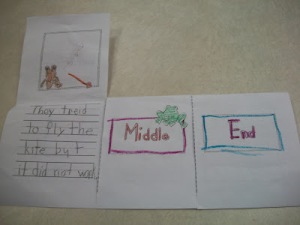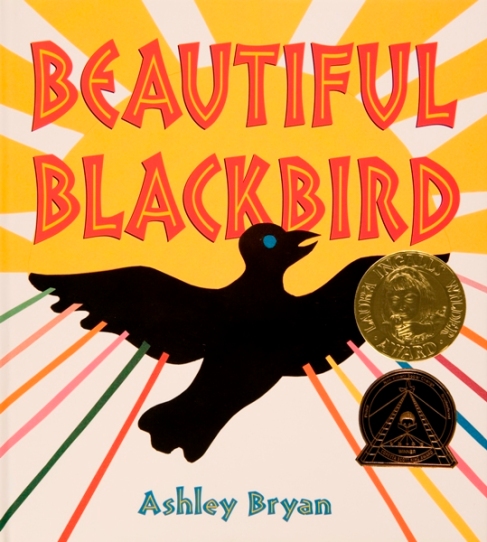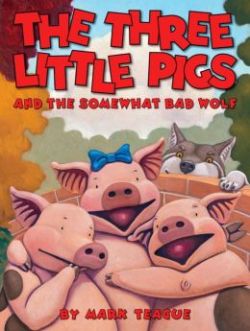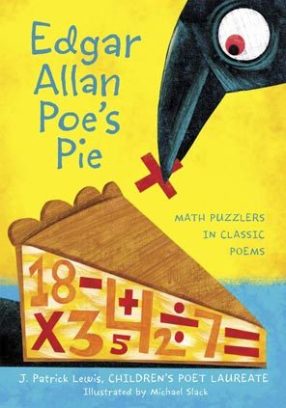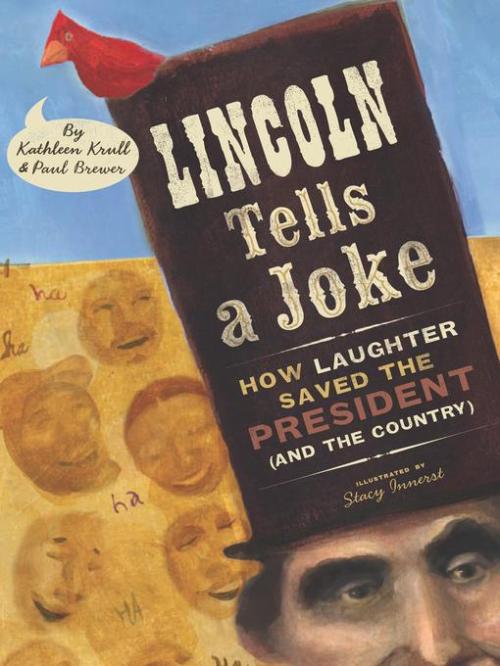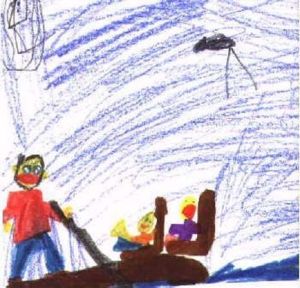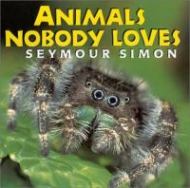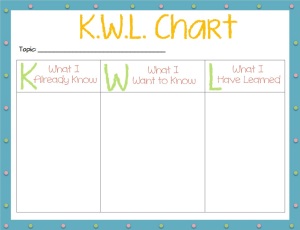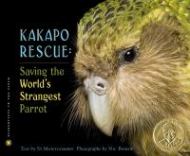Steig, William. 1969. Sylvester and the Magic Pebble. Ill. by William Steig. New York: Aladdin Paperbacks. ISBN-13: 9780812401042
In the classic book, Sylvester and the Magic Pebble, William Steig tells the story of a young donkey that stumbles across a red, magic stone one day on an adventure in the woods. Immediately, Sylvester finds himself amazed at the fact that, when he holds the stone in his hand and makes a wish, it invariably comes true. Trouble strikes, however, when Sylvester meets up with a mean, vicious-looking lion. Without taking the time to think it through, Sylvester wishes to be turned into a rock in order to escape the fate that awaits him between the lion’s jaws. His strategy works, but now, as an inanimate object, he is unable to wish himself back to being a donkey. Sad, alone, and unable to return his normal life, Sylvester is forced to face the next month as a rock until one day his grief-stricken parents decide to take a walk. Sylvester’s mother and father randomly find themselves picnicking right on top of the rock that is actually their son, and they express a fervent wish that Sylvester could be with them once again. Just like that, Sylvester is restored to his normal, donkey self, and tearfully reunites with his stunned parents.
Children of all ages and cultural backgrounds will fall in love with this simple yet powerful story. Inevitably, they will find themselves cheering for the seemingly impossible happy ending and will feel a wide array of emotions along the way as they get to know the unforgettable main character, Sylvester. In 2005, Publisher’s Weekly stated that Sylvester and the Magic Pebble “has charmed a generation of readers and will no doubt go on to attract a new one.” No matter the reader’s age, Sylvester and the Magic Pebble sends a clear message that sometimes what we currently have is all we will really ever need.
The diverse use of color, shapes, and lines in Steig’s illustrations allow the reader to easily connect with the emotions of each character and recognize the intended mood. Colors appear brighter, characters are seen with looks of jubilation, and the bright sun comes out to shine on pages where the mood is obviously a happy one. Conversely, colors are darker and tears of sadness fall down the character’s faces when Sylvester disappears and grief overtakes his parents. Emotions are even depicted in the body language of the characters. For example, Sylvester’s parents appear slumped over and jaded while he is missing and upright and thankful when he is found.
As Williams Steig has had a very successful career authoring many children’s books, taking the time produce an “author spotlight” would be a great opportunity for the library to encourage literacy among children and their families. Additionally, displaying other books with themes of people or objects being lost (and eventually found) may spark thematic conversations and connections among children and contribute to a love of reading.
Sylvester and the Magic Pebble was a recipient of the Caldecott Medal in 1970, was nominated for an Audie award in 2013, and was mentioned in the 2005 USA Today Book club. Additionally, it was selected as one of the 100 Best Books of the Century by the National Education Association.
Books in Print. Texas Woman’s University Library. Accessed September 7, 2013.
